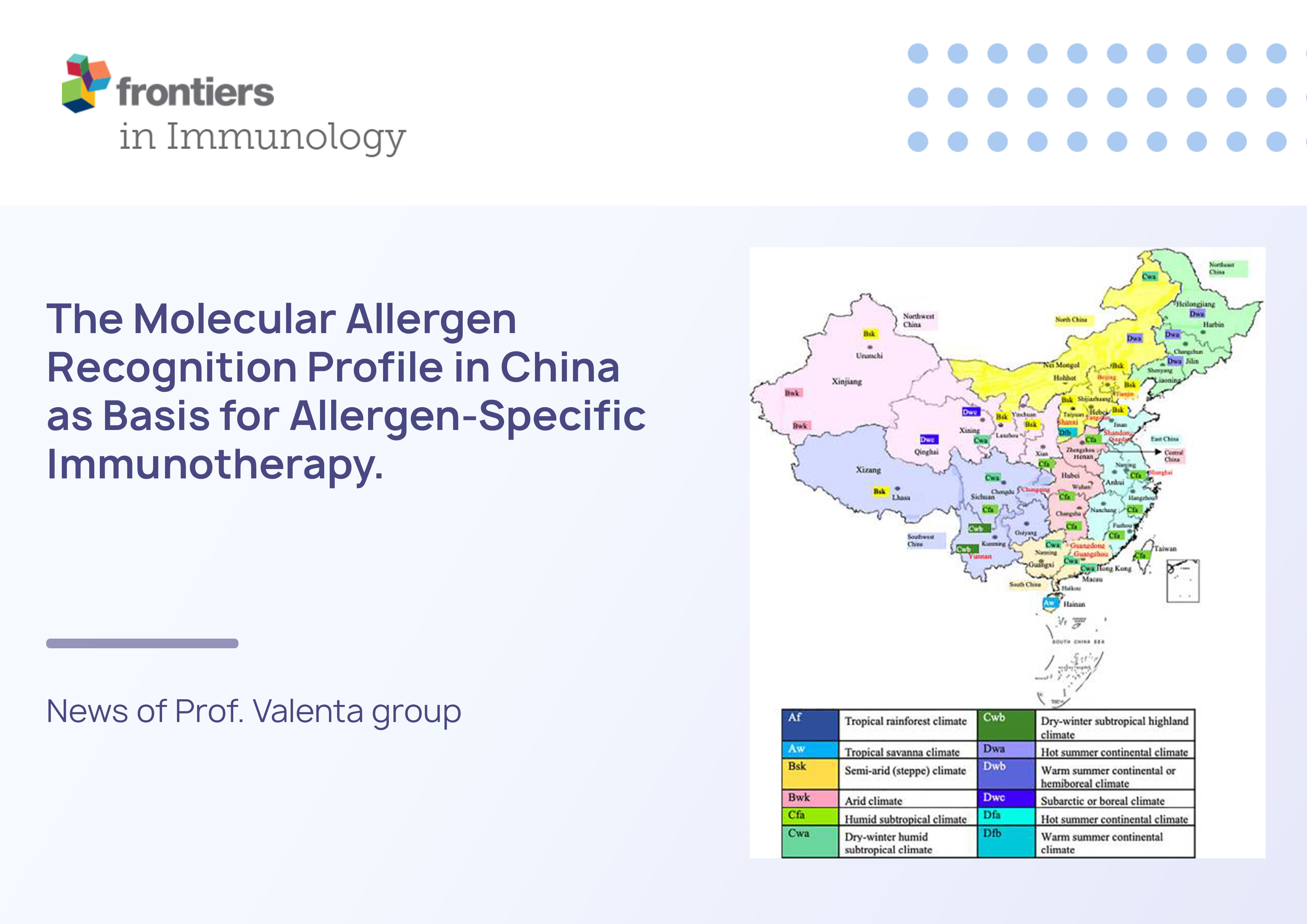The Molecular Allergen Recognition Profile in China as Basis for Allergen-Specific Immunotherapy.
D'souza N, Weber M, Sarzsinszky E, Vrtala S, Curin M, Schaar M, Garib V, Focke-Tejkl M, Li Y, Jones R, Chen H, Valenta R, Sun B. Front Immunol. 2021 Aug 27;12:719573. doi: 10.3389/fimmu.2021.719573
https://pubmed.ncbi.nlm.nih.gov/34512644/
Abstract
Approximately 30% of the world population suffers from immunoglobulin-E (IgE)-mediated allergy. IgE-mediated allergy affects the respiratory tract, the skin and the gastrointestinal tract and may lead to life-threatening acute systemic manifestations such as anaphylactic shock. The symptoms of allergy are mediated by IgE-recognition of causative allergen molecules from different allergen sources. Today, molecular allergy diagnosis allows determining the disease-causing allergens to develop allergen-specific concepts for prevention and treatment of allergy. Allergen-specific preventive and therapeutic strategies include allergen avoidance, vaccination, and tolerance induction. The implementation of these preventive and therapeutic strategies requires a detailed knowledge of the relevant allergen molecules affecting a given population. China is the world´s most populous country with around 1.4 billion inhabitants and an estimated number of more than 400 million allergic patients. Research in allergy in China has dramatically increased in the last decade. We summarize in this review article what is known about the dominating allergen sources and allergen molecules in China and what further investigations could be performed to draw a molecular map of IgE sensitization for China as a basis for the implementation of systematic and rational allergen-specific preventive and therapeutic strategies to combat allergic diseases in this country.




